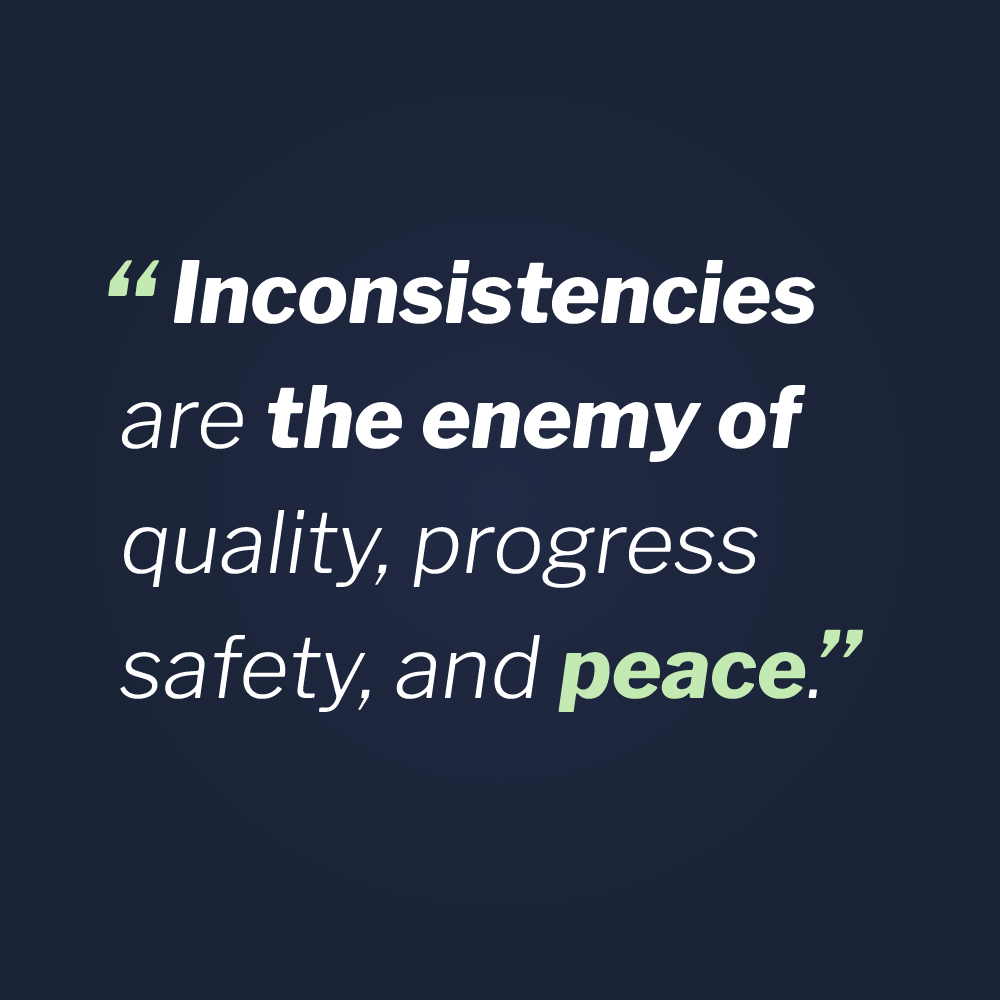In healthcare environments, unpredictability is often the spark that ignites workplace violence. When patients, families, or even staff don't know what to expect—or when responses to similar situations vary dramatically—tension rises and the potential for conflict increases exponentially.
As we observe National Safety Month this June, it's worth exploring how consistency in communication serves as a powerful violence prevention strategy. By making staff responses more predictable, healthcare organizations can build psychological safety and significantly reduce volatile encounters, even in high-stress environments.
The Link Between Unpredictability and Aggression
Research in behavioral psychology has consistently demonstrated that unpredictability creates stress and can trigger aggressive responses:
- Studies show that inconsistent responses from authority figures increase anxiety and hostility
- Neurological research indicates that unpredictable environments activate threat-response systems in the brain
- Behavioral analyses of workplace violence incidents often reveal inconsistent enforcement of policies as a contributing factor
In healthcare settings, these dynamics are amplified by the inherent stress, vulnerability, and power imbalances already present. When a patient or visitor receives different answers to the same question depending on who they ask, or when policies seem arbitrarily enforced, their frustration becomes understandable—even if their aggressive response isn't acceptable.
How Inconsistency Manifests in Healthcare
Inconsistency appears in various forms throughout healthcare organizations:
Procedural Inconsistency:
- Different visiting hours enforcement depending on the staff member
- Varying interpretations of patient rights policies
- Inconsistent medication administration timing
- Unpredictable wait times without explanation
Communication Inconsistency:
- Mixed messages about treatment plans
- Different explanations for the same procedure
- Varying responses to complaints or concerns
- Inconsistent tone and approach among team members
Response Inconsistency:
- Unpredictable reactions to patient behaviors
- Inconsistent consequences for policy violations
- Variable tolerance for inappropriate behaviors
- Differing approaches to conflict situations
Each inconsistency represents a potential flashpoint that can escalate from momentary frustration to verbal aggression or even physical violence.
The Predictability Advantage
At Vistelar, our conflict management training emphasizes consistency as a foundational element of violence prevention. When staff responses become predictable, several safety benefits emerge:
1. Reduced Anxiety
When patients and visitors know what to expect, their anxiety diminishes. Even delivering difficult news or enforcing policies becomes less likely to trigger aggression when done consistently.
2. Clearer Boundaries
Consistency establishes and reinforces behavioral boundaries. When everyone understands where the lines are drawn—and that they remain fixed regardless of who's enforcing them—boundary testing decreases.
3. Increased Perceived Fairness
Humans have an innate sense of fairness. Consistent enforcement of policies, even strict ones, is generally perceived as more fair than inconsistent enforcement of lenient policies.
4. Enhanced Trust
Predictability builds trust. When patients and families can rely on consistent responses, they're more likely to view staff as trustworthy partners rather than arbitrary gatekeepers.
5. Improved De-escalation Success
When a situation does escalate, consistent de-escalation approaches are more effective because they don't introduce new unpredictability into an already volatile situation.
Building Consistency Through Structured Approaches
Achieving consistency across an organization requires structured approaches to communication and conflict management:
1. Standardized Verbal Protocols
Implementing standardized verbal frameworks ensures consistent messaging:
- Universal Greeting: A structured introduction that includes a greeting, name and role identification, reason for contact, and a relevant question
- Explanatory Framework: Consistent approach to explaining policies, procedures, and decisions
- Redirection Techniques: Standard methods for redirecting conversations that are becoming confrontational
- Refusal Statements: Consistent language for situations where requests must be denied
2. Consistent Non-verbal Communication
Standardizing critical non-verbal elements:
- Proxemics: Consistent approach to physical positioning and personal space
- Stance: Standardized non-threatening positioning during potential conflict
- Facial Expressions: Appropriate expressions for various situations
- Hand Positions: Consistent, non-threatening hand placement
3. Unified Policy Enforcement
Creating consistency in policy application:
- Clear Guidelines: Unambiguous policies that minimize subjective interpretation
- Decision Trees: Structured approaches to common scenarios
- Exception Protocols: Standardized processes for handling necessary exceptions
- Documentation Standards: Consistent recording of incidents and interventions
Implementation Strategies
Transforming an organization from inconsistent to consistent requires systematic effort:
1. Comprehensive Training
Train all staff—clinical and non-clinical—in the same communication and conflict management protocols. This ensures that patients and visitors receive consistent responses regardless of which staff member they encounter.
2. Cross-departmental Alignment
Ensure that policies and communication approaches are aligned across departments. Inconsistency often emerges when different units operate with different rules or expectations.
3. Regular Practice
Communication skills are perishable and require regular reinforcement. Implement brief practice sessions during team meetings, shift changes, or dedicated skill-building times.
4. Leadership Modeling
Leaders must exemplify the consistent approaches they expect from staff. When leaders demonstrate variability in their responses, it undermines the consistency message.
5. Feedback Mechanisms
Create systems to identify and address inconsistencies:
- Regular policy reviews
- Communication audits
- Patient and family feedback specifically addressing consistency
- Peer observation programs
The Social Contract Approach
One effective framework for establishing consistency is what Vistelar refers to as the "Social Contract"—a clear, mutually understood set of behavioral expectations and consequences that applies to everyone within the organization.
clear, mutually understood set of behavioral expectations and consequences that applies to everyone within the organization.
Elements of an effective Social Contract include:
1. Clear Behavioral Expectations
Explicitly stated standards for how people should behave, including staff, patients, and visitors.
2. Transparent Consequences
The same standards apply to everyone, with necessary accommodations made transparent.
3. Transparent Consequences
The same standards apply to everyone, with necessary accommodations made transparent.
4. Regular Reinforcement
Consistent messaging about the Social Contract through signage, verbal reminders, and orientation materials.
5. Staff Alignment
All staff understand and enforce the Social Contract consistently, regardless of role or department.
When properly implemented, this approach creates an environment where expectations are clear, responses are predictable, and the potential for conflict significantly decreases.
Measuring the Impact
Organizations that implement consistency initiatives should measure their impact:
- Tracking incident rates before and after implementation
- Monitoring complaints related to perceived unfairness
- Surveying staff regarding their confidence in handling difficult situations
- Assessing patient and visitor perceptions of organizational fairness
- Comparing violence rates with industry benchmarks
The Path Forward
Creating a consistent, predictable environment doesn't mean being rigid or inflexible. Rather, it means that necessary flexibility occurs within transparent frameworks that everyone understands.
This National Safety Month, consider how your organization might enhance consistency in communication and policy enforcement. By making staff responses more predictable, you can create an environment where everyone—patients, visitors, and staff—feels safer and more secure, even during challenging interactions.








